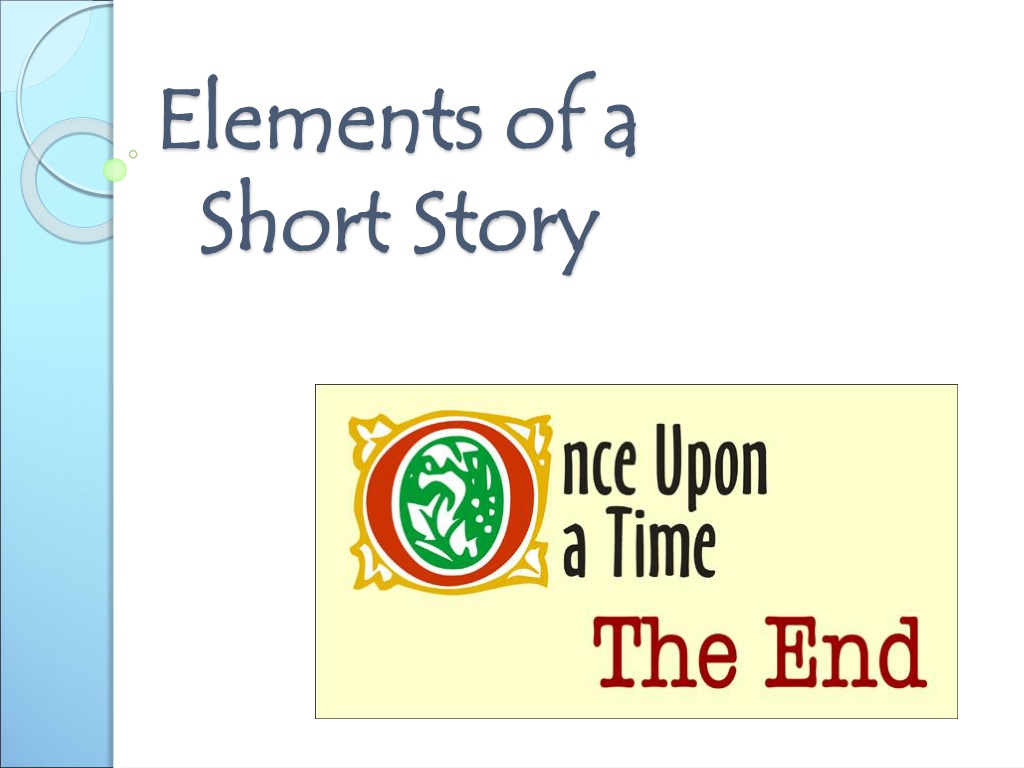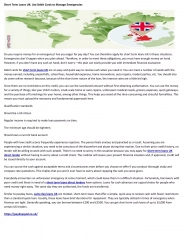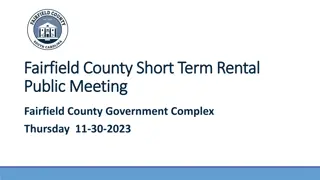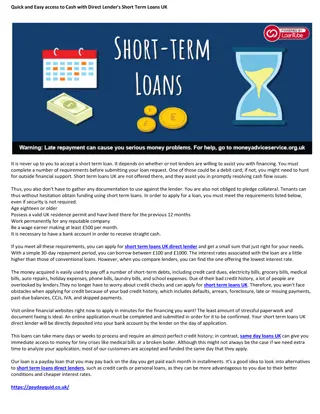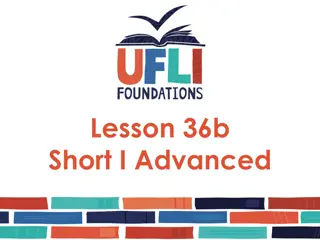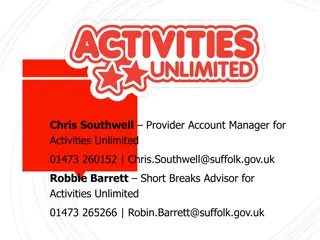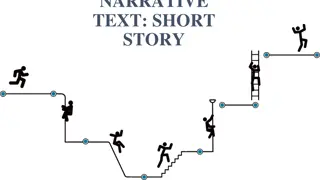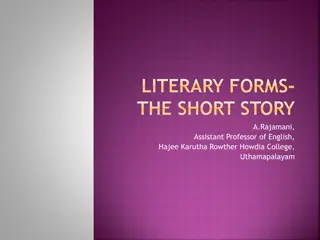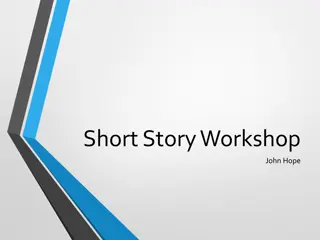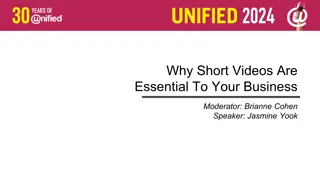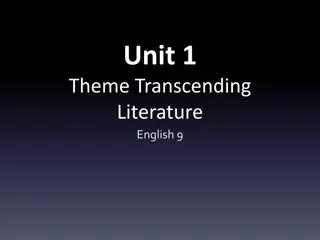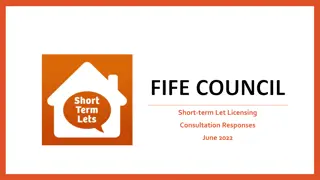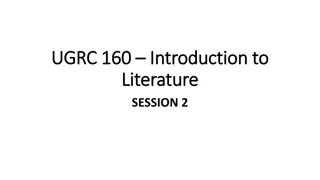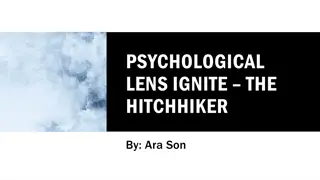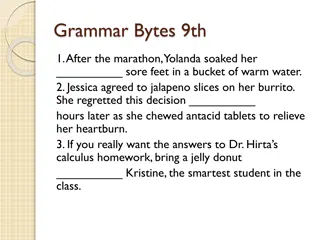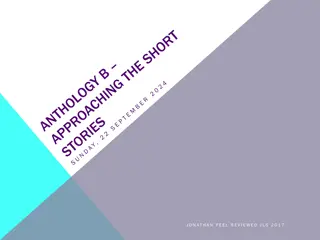Understanding Elements of a Short Story and Their Significance
Short stories consist of key elements such as theme, characterization, dialogue, foreshadowing, and more that contribute to the overall structure and impact of the narrative. Familiarity with these elements helps readers analyze and appreciate the story's nuances effectively.
Uploaded on Oct 03, 2024 | 0 Views
Download Presentation

Please find below an Image/Link to download the presentation.
The content on the website is provided AS IS for your information and personal use only. It may not be sold, licensed, or shared on other websites without obtaining consent from the author. Download presentation by click this link. If you encounter any issues during the download, it is possible that the publisher has removed the file from their server.
E N D
Presentation Transcript
Elements of a Elements of a Short Story Short Story
OBJECTIVES OBJECTIVES Identify elements of a short story Define elements of a short story Demonstrate mastery of short story elements
OVERVIEW OVERVIEW Short stories often contain structural and character elements that should be familiar to you. These elements can be used as guides to help you think about the actions, themes, and contexts of the story.
Genre: a distinctive category of literary composition external image books .jpg
Inference A conclusion reached based on textual evidence and reasoning INVESTIGACI N CUALITATIVA - home
Elements of a Short Story Theme The subject of a story. It is not a moral, lesson, or a rule for living. It is a general idea Ex. Themes from The Tragedy of Romeo and Juliet Love Family Feud
lavori-in-corso.gif Central Idea The most important or central thoughts Tells reader what text is about More specific to the story
CHARACTERIZATION CHARACTERIZATION The description of the personalities of the characters in the story and the ways in which authors reveal their personalities: - Speech - Thoughts - Effect on other characters - Action - Looks STEAL
Dialogue Conversations between people in a piece of writing. Usually has quotation marks ( Hello ) Disney characters ,
FORESHADOWING A warning or indication of future event(s)
FLASHBACK A scene in a movie set in a time earlier than the main story. Goes back in time ANd9GcSRx91mQxjW5NBCE73Xfjw2_erHvLRLU2_9GPMC5vGMBpQLOJwFxg
Point of View The position of the author or character It is their attitude
Point of View First Person Point of View- a character from the story is telling the story; uses the pronouns I and me Second Person Point of View- the narrator tells the story to another character using the words you Third Person Point of View- an outside narrator is telling the story; uses the pronouns he , she , they
Types of Third-Person Point of View Third-Person Limited The narrator knows the thoughts and feelings on only ONE character in a story. Third-Person Omniscient The narrator knows the thoughts and feeling of ALL the characters in a story. Another Point Of View by stiGlittz on DeviantArt point of view storys can be written in three different point of views ...
Tone and Mood Tone: The author s attitude toward the subject Mood: the emotion the reader feels from a piece of literature 3 ...
Characters Protagonist and antagonist are used to describe characters. The protagonist is the main character of the story, the one with whom the reader identifies. This person is not necessary good . The antagonist is the force in opposition of the protagonist; this person may not be bad or evil , but he/she opposes the protagonist in a significant way
Conflict Conflict External Conflict: Conflict between a character and another person OR a character and something non-human. - Man vs. Man - Man vs. Society - Man vs. Nature
C:\Users\Lindsey\AppData\Local\Microsoft\Windows\Temporary Internet Files\Content.IE5\FYT1JDZ0\MC900078711[1].wmf Conflict Internal Conflict: Conflict takes place inside a character s mind Man vs. Himself (fears, self-doubts, etc.) Clipart - Super hero flying silhouette
Parts of a Plot Exposition - introduction; characters, setting and conflict (problem) are introduced Rising Action- where the conflict starts to develop Climax- highest point of interest or suspense of a story Falling Action - tension eases; events show the results of how the main character begins to resolve the conflict Resolution- loose ends are tied up; the conflict is solved
Plot Diagram 3 4 2 1 5
1.Exposition This usually occurs at the beginning of a short story. Here the characters are introduced. We also learn about the setting of the story. Most importantly, we are introduced to the main conflict (main problem).
2. Rising Action 2. Rising Action This part of the story begins to develop the conflict(s). A building of interest or suspense occurs and leads to the climax. Complications arise
3. Climax This is the turning point of the story. Usually the main character comes face to face with a conflict. The main character will change in some way. This is the most intense moment.
4. Falling Action Action that follows the climax and ultimately leads to the resolution
5. Resolution The conclusion; all loose ends are tied up. Either the character defeats the problem, learns to live with the problem, or the problem defeats the character. j0212919
Putting It All Together 1. Exposition Beginning of Story 2. Rising Action Middle of Story 3. Climax 4. Falling Action End of Story 5. Resolution
Diagram of Plot Climax Introduction/ Exposition Resolution Setting, characters, and conflict are introduced
